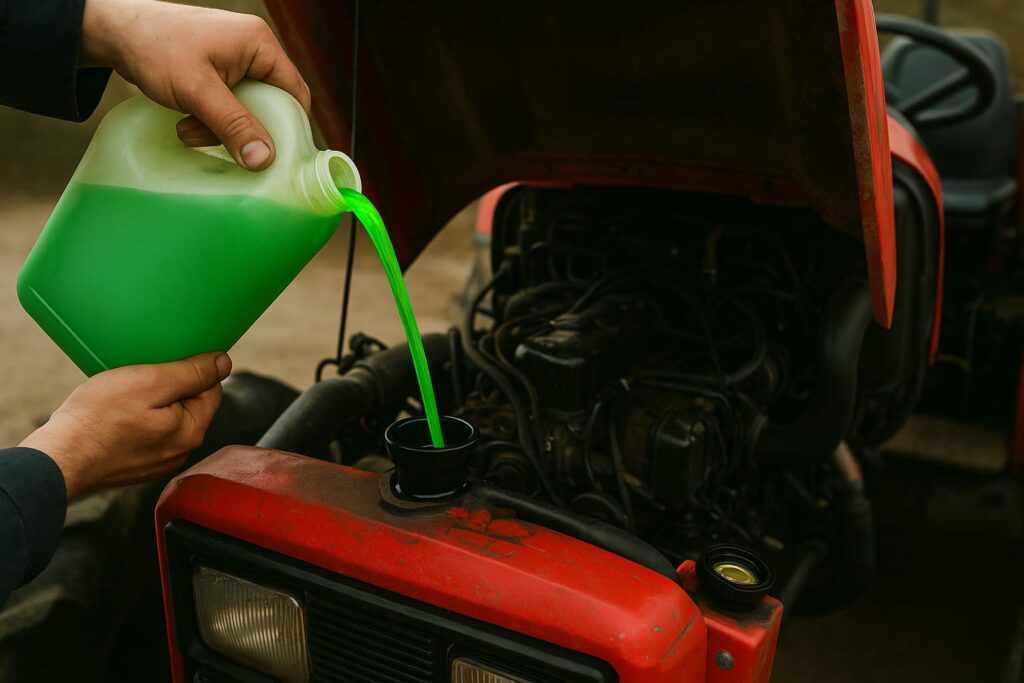
Why We Use Coolant in Tractor
Coolant in a tractor is used to regulate the engine’s temperature
preventing overheating and ensuring optimal performance. It helps dissipate heat generated during engine operation, protects engine components from thermal damage, and maintains efficient functioning under heavy loads or high temperatures. Proper cooling also extends the engine’s lifespan and improves fuel efficiency.
Water vs. Coolant
| Feature | Water | Coolant |
|---|---|---|
| Purpose | Primarily for cooling | For cooling and engine protection |
| Freezing Point | Freezes at 0°C | Contains antifreeze, prevents freezing |
| Boiling Point | Boils at 100°C | Higher boiling point, prevents overheating |
| Corrosion Protection | No | Contains additives to prevent rust and corrosion |
| Lubrication | No | Yes, lubricates water pump and parts |
| Color/Additives | Usually clear, no additives | Often colored, contains corrosion inhibitors |
Water vs. Coolant: Understanding the Differences and Features of Coolant
When it comes to maintaining the optimal temperature of engines and machinery, choosing the right fluid is crucial. Two common options are water and coolant. While both serve the purpose of heat transfer, they have distinct properties and applications.
Water: The Basic Cooling Medium
Advantages
-
High Thermal Conductivity: Water is excellent at absorbing and transferring heat.
-
Availability and Cost: It is inexpensive and readily available.
-
Effective in Short-Term Use: Suitable for temporary cooling needs.
Disadvantages
-
Corrosion: Water can cause rust and corrosion in metal parts.
-
Freezing Point: It freezes at 0°C, which can damage engines in cold climates.
-
Boiling Point: Boils at 100°C under standard pressure, limiting its effectiveness at high temperatures.
-
Scale and Mineral Deposits: Can lead to mineral buildup, reducing efficiency.
Coolant: The Specialized Fluid
What is Coolant?
Coolant, often called antifreeze, is a specially formulated liquid designed to regulate engine temperature and prevent damage. It is typically a mixture of water and chemical additives.
Features of Coolant
-
Antifreeze Properties: Prevents freezing in cold weather.
-
Boiling Point Elevation: Raises the boiling point, allowing the engine to operate at higher temperatures without boiling over.
-
Corrosion Inhibition: Contains additives that protect metal parts from rust and corrosion.
-
Lubrication: Provides lubrication to water pump and other moving parts.
-
Color and Additives: Available in various colors (green, orange, pink) for identification and contain dyes and inhibitors.
Types of Coolant
-
Inorganic Acid Technology (IAT): Traditional coolants with silicates and phosphates.
-
Organic Acid Technology (OAT): Longer-lasting, with organic acids.
-
Hybrid Organic Acid Technology (HOAT): Combines features of IAT and OA
